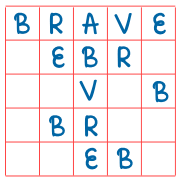Ramanujan 
He was born on 22nd of December 1887 in a small village of Tanjore district, Madras. He failed in English in Intermediate, so his formal studies were stopped but his self-study of mathematics continued. He sent a set of 120 theorems to Professor Hardy of Cambridge. As a result he invited Ramanujan to England.Ramanujan showed that any big number can be written as sum of not more than four prime numbers.
He showed that how to divide the number into two or more squares or cubes.
When Mr Litlewood came to see Ramanujan in taxi number 1729, Ramanujan said that 1729 is the smallest number which can be written in the form of sum of cubes of two numbers in two ways, i.e. 1729 = 93 + 103 = 13 + 123 since then the number 1729 is called Ramanujan’s number.
In the third century B.C, Archimedes noted that the ratio of circumference of a circle to its diameter is constant. The ratio is now called ‘pi ( Π )’ (the 16th letter in the Greek alphabet series)
The largest numbers the Greeks and the Romans used were 106 whereas Hindus used numbers as big as 1053 with specific names as early as 5000 B.C. during the Vedic period.
ARYABHATA
Aryabhatta was born in 476A.D in Kusumpur, India.
He was the first person to say that Earth is spherical and it
revolves around the sun.
He gave the formula (a + b)2 = a2 + b2 + 2ab
He taught the method of solving the following problems:
BRAHMAGUPTA
Brahma Gupta was born in 598A.D in Pakistan.
He gave four methods of multiplication.
He gave the following formula, used in G.P series
a + ar + ar2 + ar3 +……….. + arn-1 = (arn-1) ÷ (r – 1)
He gave the following formulae :
Area of a cyclic quadrilateral with side a, b, c, d= √(s -a)(s- b)(s
-c)(s- d) where 2s = a + b + c + d
Length of its diagonals =

SHAKUNTALA DEVI
ShakuntalaDevi was born in 1939. In 1980, she gave the product of two, thirteen digit numbers within 28 seconds, many countries have invited her to demonstrate her extraordinary talent.
In Dallas she competed with a computer to see who give the cube root of 188138517 faster, she won. At university of USA she was asked to give the 23rd root of
91674867692003915809866092758538016248310668014430862240712651642793465704086709659
32792057674808067900227830163549248523803357453169351119035965775473400756818688305
620821016129132845564895780158806771.
She answered in 50 seconds. The answer is 546372891. It took a UNIVAC 1108 computer, full one minute (10 seconds more) to confirm that she was right after it was fed with 13000 instructions.
Now she is known to be Human Computer.
BHASKARACHARYA
He was born in a village of Mysore district. He was the first to give that any number divided by 0 gives infinity (00).
He has written a lot about zero, surds, permutation and combination.
He wrote, “The hundredth part of the circumference of a circle seems to be straight. Our earth is a big sphere and that’s why it appears to be flat.”
He gave the formulae like sin(A ± B) = sinA.cosB ± cosA.sinB
Source: http://www.icbse.com/indian-mathematicians



















